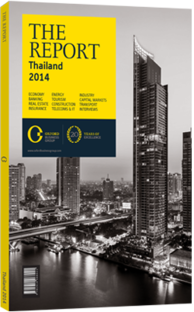OBG talks to Prasarn Trairatvorakul, Governor, Bank of Thailand (BOT)

Interview: Prasarn Trairatvorakul
How has the BOT eased restrictions on foreign banks? Do you anticipate greater domestic equity stakes being acquired by international firms?
PRASARN TRAIRATVORAKUL: Thailand has been promoting financial liberalisation since 1994, when it fully liberalised its current account transactions and allowed greater freedom for foreign investment. Only certain restrictions on capital outflows and foreign ownership, such as in the real estate and banking sectors, remain. On the banking side, the BOT achieved a milestone under phase two of the Financial Sector Master Plan in 2012, by allowing existing foreign bank branches to apply to become subsidiaries that can establish up to 20 branches and 20 off-premise ATMs.
Since mid-2013, new subsidiary applications have been open to foreign banks. With positive economic prospects and further banking liberalisation, we expect to see a continued increase in foreign participation in the sector for the foreseeable future.
Many argue Asia is facing a new credit bubble. How can you ensure the market will not overheat and stop banks from issuing too many loans?
PRASARN: While there is no imminent sign of a credit bubble in Thailand at present, strong credit expansion, especially in certain pockets of the economy such as the household sector, is being monitored closely. The household debt to GDP ratio rose from 63% in 2010 to 78% at the end of 2012 and continued on an upward trend in 2013.
An asset bubble can be identified with certainty only in hindsight. In light of this fact, policymakers will have to take a proactive and pre-emptive approach if they are to prevent the build-up of bubbles. The BOT, for its part, continues to discourage high-risk activities through rigorous standards of supervision, prudent provisions for loan losses and timely implementation of macroprudential policy. All of these measures are designed to safeguard and strengthen the country’s overall financial stability.
How is the BOT managing capital inflows and outflows in the market? What are the short-term and long-term effects of a rate cut?
PRASARN: Thailand has long been very open to capital flows, with virtually no restrictions on inflows.
Some restrictions do, however, remain on residents’ outflows, but most have been gradually removed as part of the Capital Account Liberalisation Master Plan to facilitate Thai investments abroad. In fact, we have continued to observe a significant increase in Thai residents’ outward investment in recent years, which has helped create more balanced capital flows.
Meanwhile, the BOT also strives to develop deeper capital markets to enhance the absorptive capacity of the wider Thai economy.
To deal with a typical surge in capital inflows, a flexible exchange rate would act as an automatic stabiliser that absorbs flows and discourages speculative behaviour by introducing uncertainty to any expected gains. In the event of unjustified and extreme market volatility, exchange rate intervention would then be the next line of defence. In addition to this, capital flow management measures could be employed in exceptional circumstances of sustained and substantial exchange rate overvaluation, which in the long term can threaten Thailand’s economic and financial stability.
Under the mandate of achieving sustainable growth while safeguarding price and financial stability, the policy interest rate is not aimed at targeting capital flows and the exchange rate per se, as the outcome would likely prove counter-productive.
If a policy rate cut is used solely for the reason of deterring capital inflows or strengthening the baht, the central bank’s commitment to the overall macroeconomic stability may be called into question by the public with potentially serious consequences.
Nevertheless, a policy rate cut may be considered to the extent that large and volatile capital inflows impinge on macroeconomic stability and outlook.
You have reached the limit of premium articles you can view for free.
Choose from the options below to purchase print or digital editions of our Reports. You can also purchase a website subscription giving you unlimited access to all of our Reports online for 12 months.
If you have already purchased this Report or have a website subscription, please login to continue.

